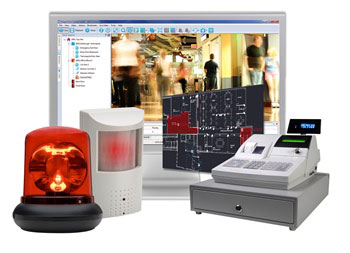
The Safe City and Its Need for Interoperability
At IndigoVision we believe in seamless integration with third party hardware and software so that our customers have the flexibility to build a solution that matches their exact requirement. This commitment is why we were one of the first members ONVIF which facilitates the standardization of interfaces for effective interoperability of IP-based security products. In a guest blog, Per Björkdahl, Chairman of ONVIF, talks of the importance of interoperability in safe cities.
Today's cities often use video management systems or other platforms to view camera footage, protect citizens and property, analyze incidents, evaluate security and to help them determine appropriate responses to events like natural disasters, disruptions to public transit and other municipal services, and to other threats to public safety. Cities implementing this connected security approach are typically referred to as safe or smart cities. Most safe cities share a common infrastructure and operate using sensors and/or cameras over a shared municipal network. Using these sensors and the data from many different devices synthesized through one interface, government officials and law enforcement are afforded a comprehensive view of a city's security.
Integrating the Many Parts of a Safe City
There are operational challenges that accompany the many systems that are included in a safe city deployment. Interoperability continues to present one of the greatest challenges, particularly with video management systems, video recording devices and cameras. The most common scenario is that municipalities have several different management systems for city operations that were created by different manufacturers, each with proprietary interfaces for integration.
In order to connect its different systems together, cities often end up employing a single-vendor "build once and maintain forever" approach, in which the continuing cost for integration of the city's systems becomes prohibitively expensive. In a world where technology and features change quickly, this approach is not practical because it severely limits an end user's ability to try new technology and/or different vendor's products and requires a substantial financial commitment to specific manufacturers and proprietary interfaces.
Standards in Safe Cities
Standards, such as those from ONVIF, provide the common link between disparate components of safe city systems. Designed specifically to overcome the challenges in multi-vendor environments, ONVIF's common interfaces facilitate communication between technologies from different manufacturers and foster an interoperable system environment. Using these standards, interoperability is enabled not only between individual components from different systems but between different systems as well, provided they conform to the ONVIF specification.
A standardized approach for both file format and associated players, which is often a challenge in multi-vendor environments, is also provided by ONVIF, increasing the efficiency of the process and also adding the potential of including metadata in exported materials and reports. ONVIF has also released an export file format specification that outlines a defined format for effective export of recorded material and forensics. These specifications offer an effective common export file format that can streamline post-event investigations where authorities are trying to react as fast as possible to apprehend suspects or to diffuse an ongoing situation.
Multi-discipline Standards
A multi-discipline physical security standard that specifies parameters for video surveillance, access control and other essential operations of a safe city command center would likely increase the prevalence of safe cities even further. Many in the broader technology industry see standards as an important component in both safe cities and the Internet of Things (IoT). The IEEE (the Institute of Electrical and Electronics Engineers) and other standards groups are already working on IoT standards for technology-based industries.
As standards and industries collaborate even further and establish minimum interoperability standards together, the need for a multi-discipline physical security standard will become more urgent. ONVIF envisions that all physical security systems will eventually have the same interfaces for interoperability, and the organization is dedicated to facilitating the work of its members in developing such a multi-discipline standard.
Per Björkdahl
Author Information:
Per Björkdahl is the current Chair of the ONVIF Steering Committee and has been since the fall of 2012. Per is involved with ONVIF's conformance initiatives and represents the member-driven organization as a speaker at trade shows and other technology events and to the media at large. His professional career includes a lifelong commitment to technical convergence with Axis Communications and companies like TAC (now part of Schneider Electric), advocating for the acceptance of communications standards in the building automation industry. Per has worked in the physical security industry for more than 25 years and was an early supporter of IP technology within the industry. Per is currently Axis Communications' Director of Business Development, a position he has held for more than 16 years.
Contact IndigoVision about your security systems
If you think your organisation could benefit from updating its security systems, contact IndigoVision today








